 Like it's early cousin, the Early Spider, the Bee suffered greatly with the dry winter and early spring, seriously affecting the rhizome and rosette growth. At the seaside, where last year there were hundreds of spikes, this year less than ten. We went many times, and even some rain in June didn't change things. At Sandwich Bay where there is a small colony in the long grass, where there is normally six or so spikes, I found just the one. An altogether disappointing season for the Bee and most Ophrys.
Like it's early cousin, the Early Spider, the Bee suffered greatly with the dry winter and early spring, seriously affecting the rhizome and rosette growth. At the seaside, where last year there were hundreds of spikes, this year less than ten. We went many times, and even some rain in June didn't change things. At Sandwich Bay where there is a small colony in the long grass, where there is normally six or so spikes, I found just the one. An altogether disappointing season for the Bee and most Ophrys.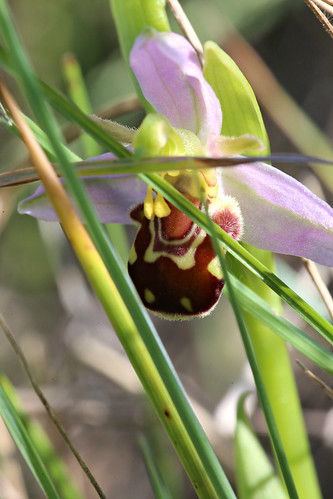 June 4th saw us down at Sandwich Bay for the annual pilgrimage to see the Lizards. I love the orchids there, but I resent paying seven quid to go to see them, even if they are on a secure site. Seven quid for half an hours photography; OK, and hour or two, and the Bee, and Pyramidal and Broomrapes. I know, but still, seven quid.
June 4th saw us down at Sandwich Bay for the annual pilgrimage to see the Lizards. I love the orchids there, but I resent paying seven quid to go to see them, even if they are on a secure site. Seven quid for half an hours photography; OK, and hour or two, and the Bee, and Pyramidal and Broomrapes. I know, but still, seven quid.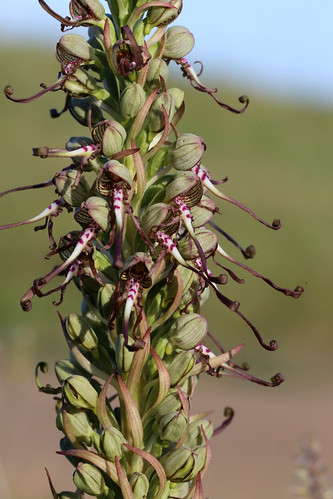 Not quite so many spikes this year, I guess the drought hit them too, but still in good numbers and of majestic size too, though some spikes were sparsely populated.
Not quite so many spikes this year, I guess the drought hit them too, but still in good numbers and of majestic size too, though some spikes were sparsely populated.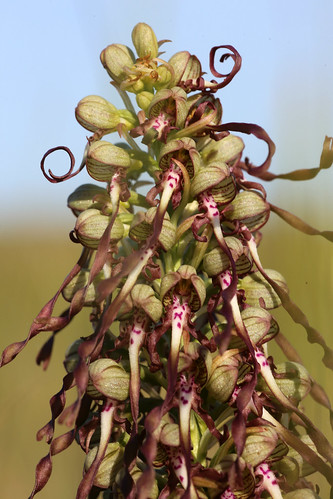 Now we know where the Heath Spotted are, a trip to Hothfield is always pleasant, even if the dogwalkers wonder why we fawn over these flowers. Due to the ph of the soil here, this is the only site in Kent for HSO, and so a trip here is a must.
Now we know where the Heath Spotted are, a trip to Hothfield is always pleasant, even if the dogwalkers wonder why we fawn over these flowers. Due to the ph of the soil here, this is the only site in Kent for HSO, and so a trip here is a must.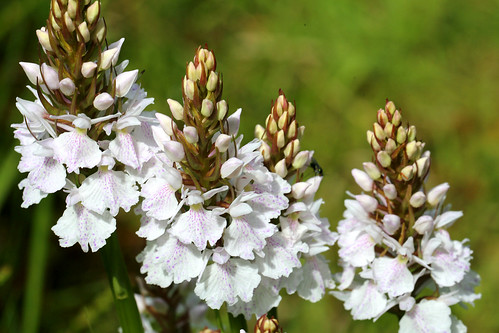 No var. alba this year, and even the pool was nearly all mud, there was a good number of HSO, so deep joy.
No var. alba this year, and even the pool was nearly all mud, there was a good number of HSO, so deep joy.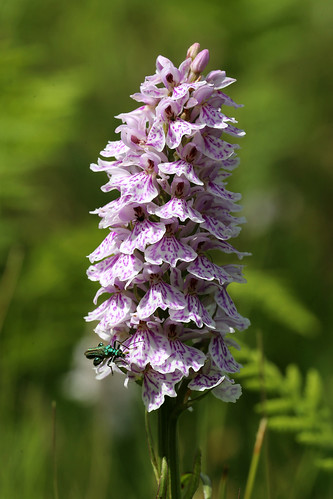 The Common Spotted were in good numbers, and best site I found was Western Heights where there was a good range of varieties; spikes, spots, dashes and lips. Although no var. alba there or at PGD, and at the latter, numbers reduced from previous years.
The Common Spotted were in good numbers, and best site I found was Western Heights where there was a good range of varieties; spikes, spots, dashes and lips. Although no var. alba there or at PGD, and at the latter, numbers reduced from previous years.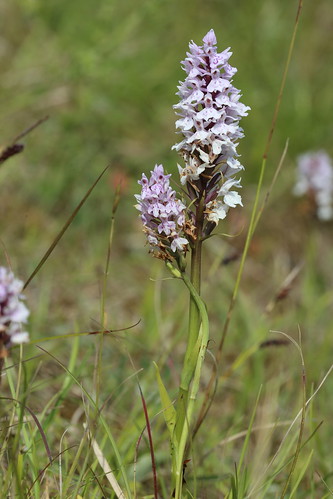
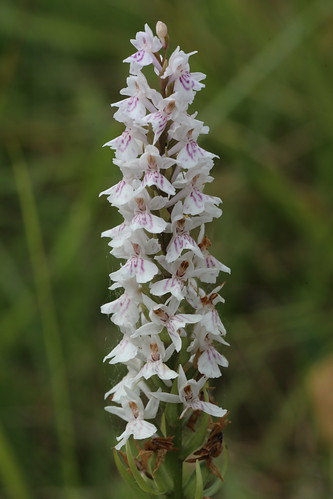 A really great year for Pyramidals, although that might be from a couple of walks I had along the cliffs to Kingsdown, and finding the cliffs covered in pink and violet spikes, although again, no var. alba found. Not here in Kent anyway, I did in Suffolk.
A really great year for Pyramidals, although that might be from a couple of walks I had along the cliffs to Kingsdown, and finding the cliffs covered in pink and violet spikes, although again, no var. alba found. Not here in Kent anyway, I did in Suffolk.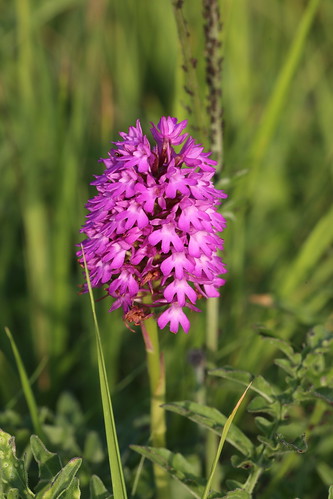
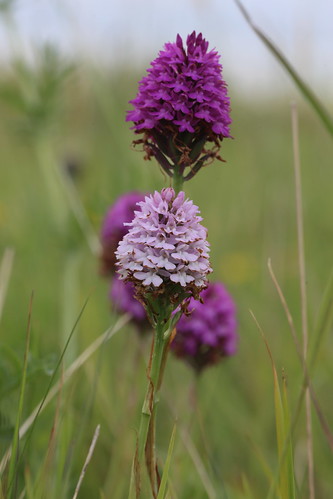 June 25th saw us back at Sandwich Bay, this time to see the Marsh Helleborines. Always a thrill when these come out, and we are able to walk among this small colony. We were there quite early in their season, so not many spokes flowering, but enough to make the heart sing with joy.
June 25th saw us back at Sandwich Bay, this time to see the Marsh Helleborines. Always a thrill when these come out, and we are able to walk among this small colony. We were there quite early in their season, so not many spokes flowering, but enough to make the heart sing with joy.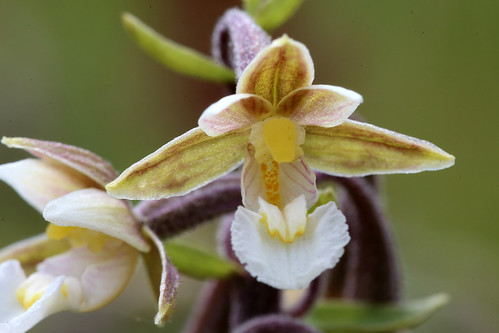
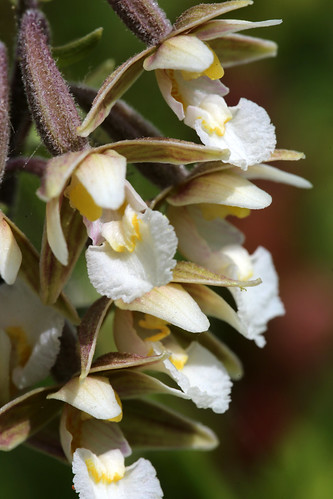 It seemed such a long wait, until July 2nd for news of the first Broad Leaved Helleborines open in Mid-Kent. I know the site well, so we set off, not really knowing what to expect, as last year's pasture clearance had all but destroyed the spikes in the open, and it was the darker ones in the footpath that thrived. Not so this year, spikes aplenty all over the meadow; pale pink, dark purple, tiny spikes, dense spikes. And all between too. We went back three times just because we could.
It seemed such a long wait, until July 2nd for news of the first Broad Leaved Helleborines open in Mid-Kent. I know the site well, so we set off, not really knowing what to expect, as last year's pasture clearance had all but destroyed the spikes in the open, and it was the darker ones in the footpath that thrived. Not so this year, spikes aplenty all over the meadow; pale pink, dark purple, tiny spikes, dense spikes. And all between too. We went back three times just because we could.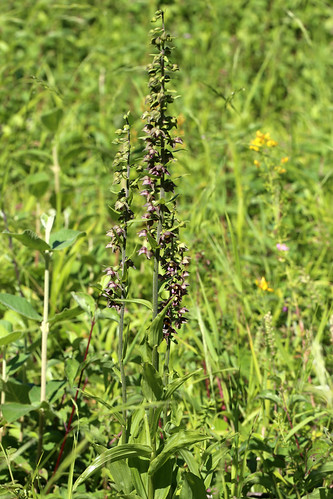
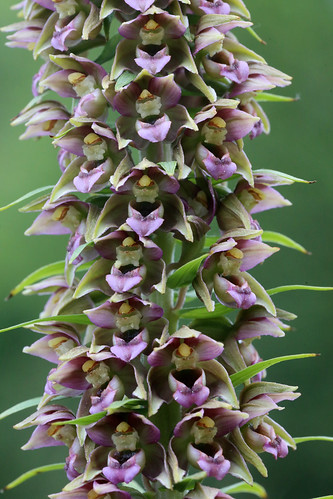
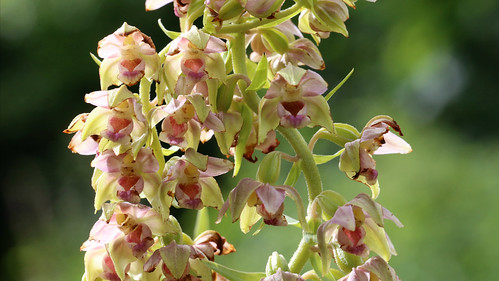 Every year I say this will be the last time we go to look at the Green Flowered Hellborines, but a shot of my friends showing an open lip meant we went up to North Kent, although I did couple that with a visit to the Roman Villa too. I can say I found one almost open, I had to hold it up to see it, really. And that is as good as it gets with them, really.
Every year I say this will be the last time we go to look at the Green Flowered Hellborines, but a shot of my friends showing an open lip meant we went up to North Kent, although I did couple that with a visit to the Roman Villa too. I can say I found one almost open, I had to hold it up to see it, really. And that is as good as it gets with them, really.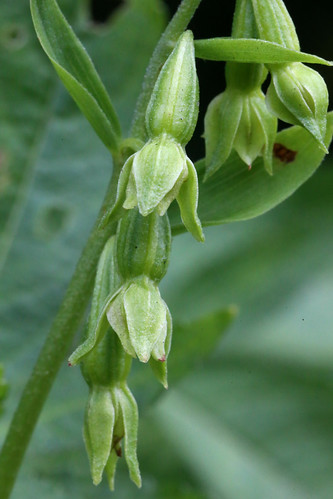 As for next year?
As for next year?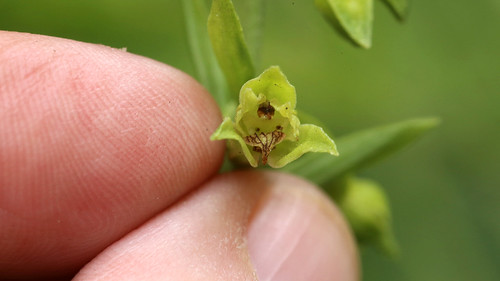 After many visits to the ancient beech wood through July, it was on the 23rd that we finally found a flowering spike. There is something so beautiful about the spikes of Violet Helleborines, just growing up from the forest floor, reaching for the sky, and colours so subtle.
After many visits to the ancient beech wood through July, it was on the 23rd that we finally found a flowering spike. There is something so beautiful about the spikes of Violet Helleborines, just growing up from the forest floor, reaching for the sky, and colours so subtle.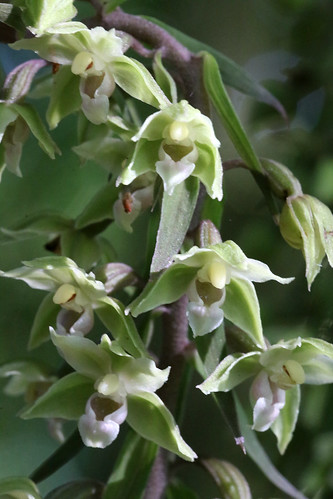 And Jools found many, many more spikes further in the wood, twenty, thirty more spikes, and huge ones too. Some in sunlight, some in undergrowth.
And Jools found many, many more spikes further in the wood, twenty, thirty more spikes, and huge ones too. Some in sunlight, some in undergrowth. 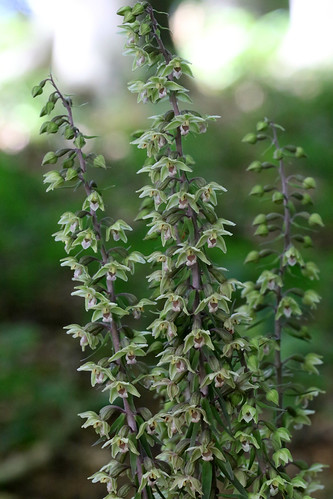 And that brings us to the final orchid, the Autumn Ladies Tresses, and my battle with Dover District Council not to mow the grassed area of the monument. I won out in the end, getting mowing suspended for six weeks while the spikes flowered and hopefully set seed. And I was away for most of their season, seeing the first one flowering before the America trip, and coming back for the final hurrah, and getting the spikes another week's stay of execution.
And that brings us to the final orchid, the Autumn Ladies Tresses, and my battle with Dover District Council not to mow the grassed area of the monument. I won out in the end, getting mowing suspended for six weeks while the spikes flowered and hopefully set seed. And I was away for most of their season, seeing the first one flowering before the America trip, and coming back for the final hurrah, and getting the spikes another week's stay of execution.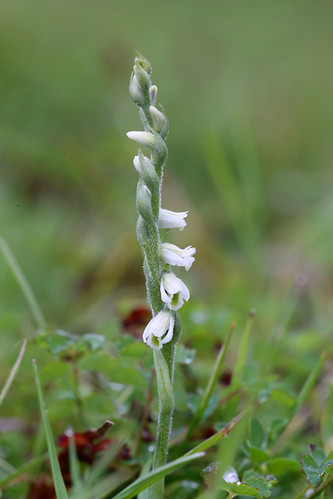 When I said at the start that the season will be remembered most for being early, I was wrong. It was the dry conditions through winter and into early spring that devastated the Ophrys and Butterflies. Numbers down by up to 90 in the Early Spiders. Orchids can cope with seasons like this, and with either only put up a spike, with no flowers, or not bother with a spike at all. What we can be sure of is that every season is different, and it is those differences, and the thrill of finding something special that keeps us going.
When I said at the start that the season will be remembered most for being early, I was wrong. It was the dry conditions through winter and into early spring that devastated the Ophrys and Butterflies. Numbers down by up to 90 in the Early Spiders. Orchids can cope with seasons like this, and with either only put up a spike, with no flowers, or not bother with a spike at all. What we can be sure of is that every season is different, and it is those differences, and the thrill of finding something special that keeps us going.Only four months now! Or maybe three.......

No comments:
Post a Comment